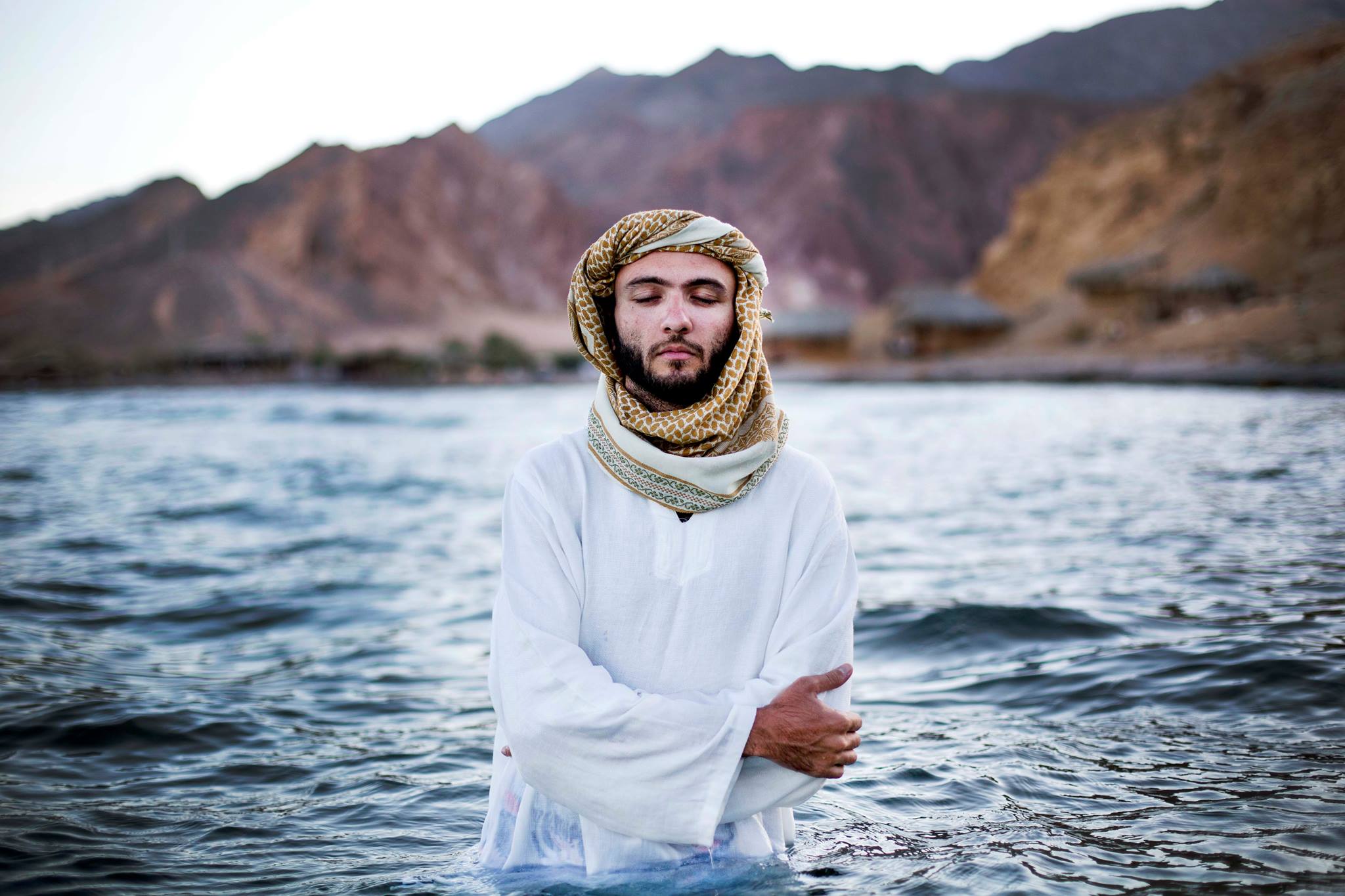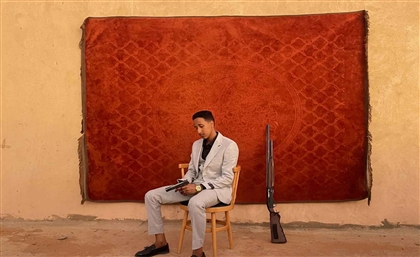Ahmed Hayman: Writing With Light
We speak to pro photojournalist Ahmed Hayman about capturing the essence of Egyptian life with every shot.

Photo by Mostafa Naguib
If you want to understand someone, really get to know them, you give them an intense soul stare, look right in their eyes, past the holes of their pupils and into whatever field of consciousness that exists within them. Eyes are locked on, and gradually defocus, disspating the visual data, and you're left with the unseeabe energy that isn't made of photons, you'll be informed of the quality of the persons essence. 27-year old Egyptian photojournalist Ahmed Hayman (pictured above) does just that, with his lens, not only with his portraiture subjects but, capturing the soul of a place or moment. After graduating from Misr University of Science and Technology, he started his career at Akhbar El Hawades, a weekly newspaper that focuses on crime and natural disaster, eventually joining Al Masry-Al Youm in 2008 as an on-the-ground photographer, covering revolutionary events of the past three years. His online portfolio sways from those soul piercing portraits, to stunning visual travel diaries, to hard-hitting photo journalism and he's amassed nearly quarter of a million fans for it, winning countless local and international photography awards along the way. We talk to Hayman about making a career out of photography, taking pictures in a paranoid city and capturing the soul of Abla Fahita...
How did you first get into photography?
I used to have cameras since I was a child, it got serious when my father got me my first digital camera in 2006.
Why did you're attention move towards portrait photography?
I started my career photographing everything from sports, news, landscapes, nearly everything related to photography, I tried it and lately I was more interested on focusing on portrait photography. Portraits can say a lot about the person in the photograph, it's a big challenge to show what's inside people through one photograph.

What is your favorite kind of portrait photography?
I like street portraits and lately shooting portraits of friends in a poetic way; I prefer neutral portraits without facial expressions or makeup... simple portraits.

Everyone nowadays sees themselves as a bit of an amateur photographer when exploring different countries. What for you constitutes as good travel photography?
Good travel photography makes you smell the streets, feel hungry and want to taste the food in the photo; it makes you jealous. A photo that makes you travel to the place. That's what I call a good travel photo.

Was there a specific photo or photo story that you feel tipped the scales with regards to your large online fanbase?
There was a portrait I posted on my page showing Eslam Abou Ali, a friend of mine sitting on a wheel chair wearing a super man shirt. He is an athlete that dreams of representing Egypt at the Paralympics with a caption asking for sponsorship. This photo was a big hit and many people contacted him afterwards.

What kind of equipment do you use now, and what did you start with?
I'm working with a Canon 5d MarkIII at the moment, I started with a Sony Cyber Shot 4 megapixel camera!
How do you usually get the subject to be act naturally in front of the lens?
I believe that I'm the mirror to the person I'm photographing; if I'm worried he/she will be worried and it goes for everything, you have to be in control.
You've done a lot of on ground work for Masry El Youm, was there ever a time where you felt you were in danger whilst shooting?
Many times, especially during the revolution time in 2011 and Mohamed Mahmoud St. clashes but I'm quite lucky nothing happened to me. I faced very tough situations but I got through them okay.

How is your approach technically different between your artistic projects and your journalism shots?
I'm trying to mix art with journalism, I don't consider my self as a news photographer, I'm a documentary photographer which means I tell stories and take time to take the best shot.
What's the most touching, or happiest moment you've ever captured?
The most touching, sad moment I ever photographed was the morning after clearing Rabaa Square. I can still hear people crying, that was very hard.
Do you think it's becoming harder for budding photographers to practice photojournalism and street photography in today's paranoid policed Cairo?
If you don't have the confidence and experience it's hard, the problem nowadays are the average people on the street. It also depends on where are you photographing. Personally I don't care, I just avoid known areas, police stations, military sites.

Photo by Basma Fathy
On a lighter note, what was it like working with Abla Fahita?
That was one of my favourite, challenging experiences. Such a lovely lady! It took some time to get to know her well, understand her in order to do a good portrait... I'm serious!

Tell us more about your non-profit project Colorful Future...
Colorful Future started when I first went to rural area two hours from Cairo and I figured out that people are living without clean water. I thought of doing something to help connecting water pipes to their houses through photography. We started by doing photoshoots in Alef Bookstore so that people pay for getting a pro portrait and the money is donated towards bringing water pipes to this rural areas.

Photo by Gamal Diab
Is there a specific shot that you are most proud of to date?
I'm proud of my photos taken in January 2011. I'm glad I was part of my country's history.
Do you have any upcoming projects or exhibitions that we should look out for?
Planning for something by the end of this year, I will keep you updated with more info once its ready!
- Previous Article The Garden's Lucky Star
- Next Article Mahmoud Refaat: Bringing Noise























